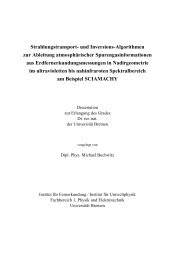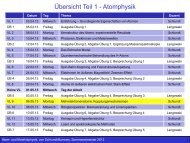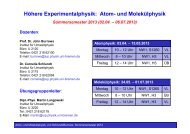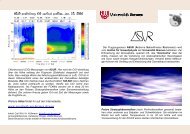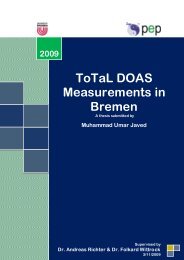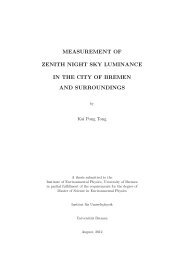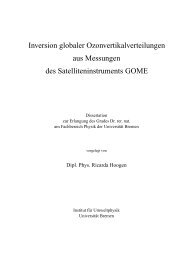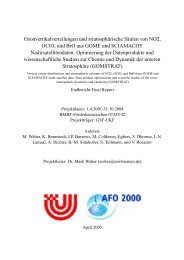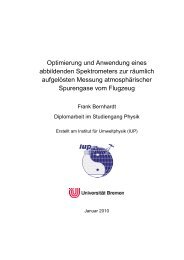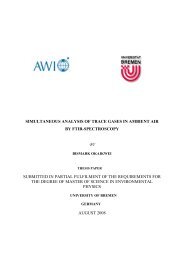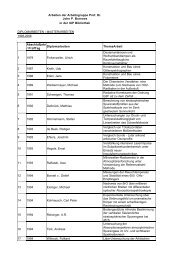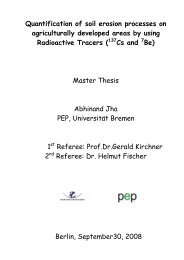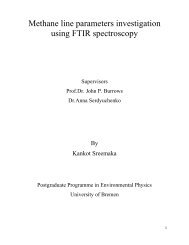True Coincidence Summing Correction in Gamma Spectroscopy
True Coincidence Summing Correction in Gamma Spectroscopy
True Coincidence Summing Correction in Gamma Spectroscopy
You also want an ePaper? Increase the reach of your titles
YUMPU automatically turns print PDFs into web optimized ePapers that Google loves.
close to the detector, often <strong>in</strong> Mar<strong>in</strong>elli beakers. The extent to which TCS is ignored is<br />
best illustrated <strong>in</strong> Figure 2.7, which shows the results of an <strong>in</strong>tercomparison arranged<br />
by the National Physics Laboratory <strong>in</strong> UK (NPL) <strong>in</strong> 1989 for the measurements of<br />
various radionuclides, <strong>in</strong>clud<strong>in</strong>g Cs-134, at environmental levels. Out of 58 Cs-134<br />
results reported, only four were with<strong>in</strong> the range expected by the NPL (i.e. with<strong>in</strong> the<br />
shaded band <strong>in</strong> the Figure-2.7.) and <strong>in</strong> only 11 cases, the true results lied with<strong>in</strong> the<br />
68% confidence limit reported by the laboratory. It is obvious that the majority of the<br />
results were low; 64% of results reported were more than 5% below the expected<br />
value. The most likely reason for this is that TCS had not been taken <strong>in</strong>to account by<br />
the laboratories report<strong>in</strong>g these results.<br />
Figure 2.7 Summarized Cs-134 results from the 1989 NPL environmental radioactivity<br />
<strong>in</strong>tercomparison exercise.[8]<br />
To achieve accurate results, the true co<strong>in</strong>cidence summ<strong>in</strong>g must be taken <strong>in</strong>to<br />
account. In fact, further NPL <strong>in</strong>tercomparison exercises <strong>in</strong> 1990 and 1992 showed<br />
similar biases <strong>in</strong> the Cs-134 results, although slightly smaller on average. Inspite of<br />
the grow<strong>in</strong>g awareness of TCS, many labroratories do not take it <strong>in</strong>to account.<br />
2.8 Achiev<strong>in</strong>g Valid Close Geometry Efficiency<br />
Calibrations<br />
A valid efficiency calibration curve can only be measured for close geometry<br />
conditions by us<strong>in</strong>g radionuclides which do not suffer from TCS. Table-2.2 lists<br />
several nuclides which emit only a s<strong>in</strong>gle gamma-ray and therefore cannot<br />
25



